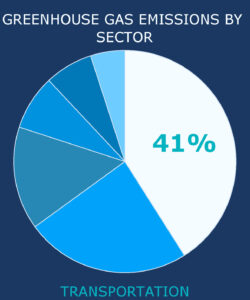
Reducing greenhouse gas emissions from transportation and land use is essential to fighting climate change. In California, the transportation represents the single largest source of GHG emissions in the state at roughly 40 percent, compared to 33 percent nationwide.